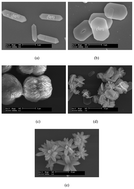Preparation, properties, formation mechanisms, and cytotoxicity of calcium oxalate monohydrate with various morphologies
Abstract
Calcium oxalate monohydrate (COM) crystals with various morphologies, such as elliptical, hexagonal, peanut-like, spherical and flower-like structures with a size of about 10 μm, were prepared through varying the reactant concentration, stirring speed, reaction temperature, and additive. X-ray diffraction and infrared spectroscopy showed that the synthesized crystals were pure-phase COM. The specific surface area and pore structure analysis demonstrated that all these COM crystals contained pores. Moreover, the zeta potential of each COM morphology was negative, and the value positively corresponded to the negative charge density of the crystal surface. Cell viability, lactate dehydrogenase (LDH) release, and reactive oxygen species (ROS) level assays suggested that these COM crystals caused injury to African green monkey renal epithelial (Vero) cells. Such an ability of the crystals to cause injury was correlated with the Ca2+ ion-rich (![[1 with combining macron]](https://www.rsc.org/images/entities/char_0031_0304.gif) 01) crystal plane area, crystal edge sharpness, zeta potential and crystal-specific surface area. Hence, the cytotoxicity of the COM crystals was closely related to their morphology and surface structure.
01) crystal plane area, crystal edge sharpness, zeta potential and crystal-specific surface area. Hence, the cytotoxicity of the COM crystals was closely related to their morphology and surface structure.



 Please wait while we load your content...
Please wait while we load your content...